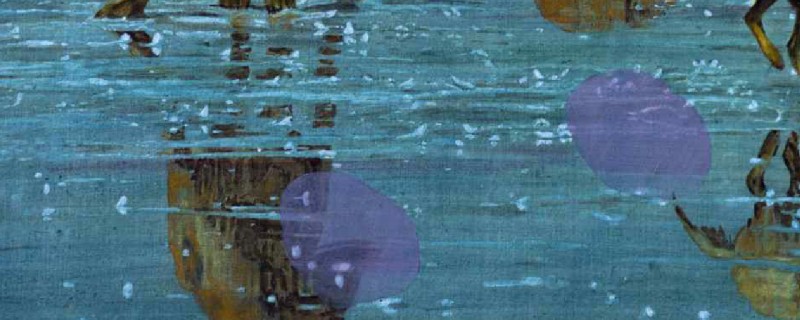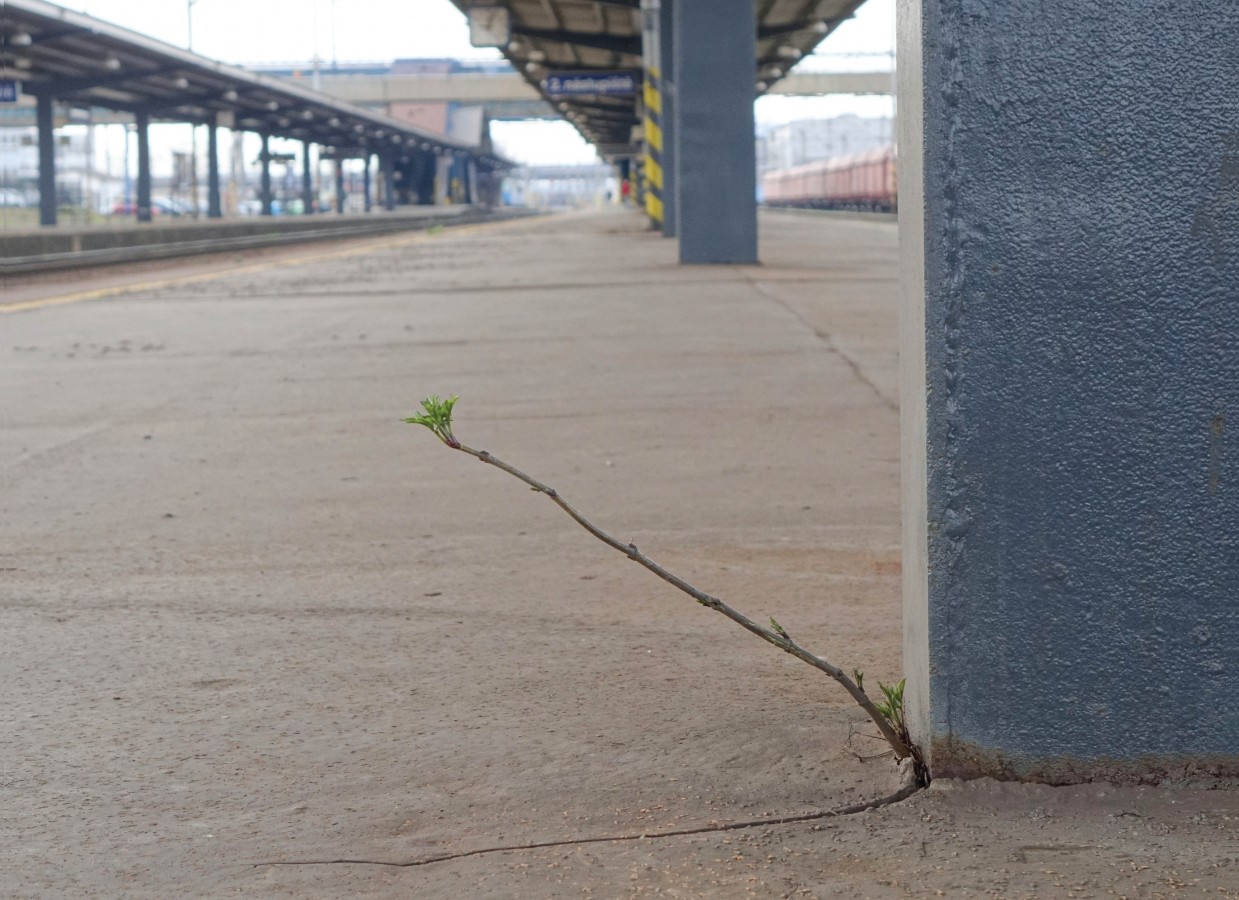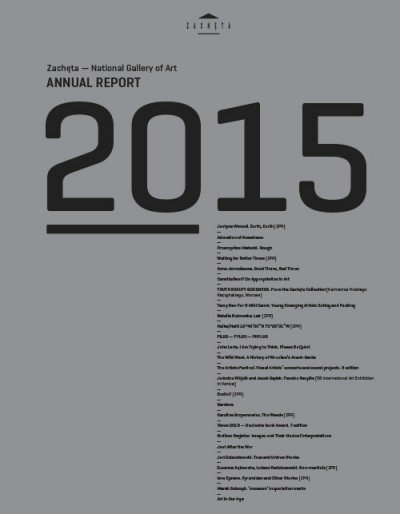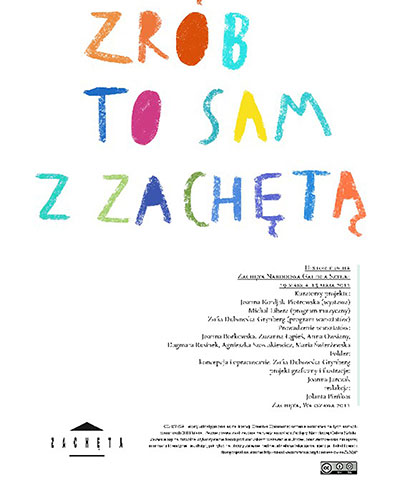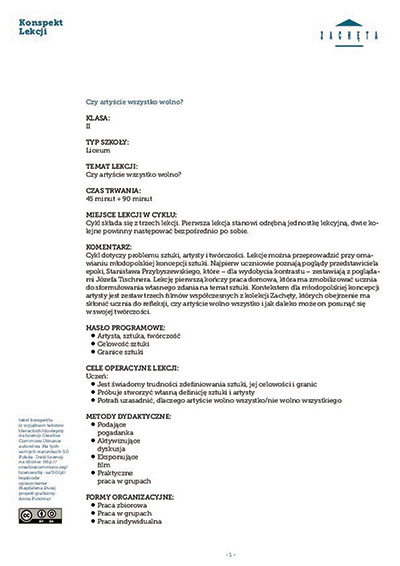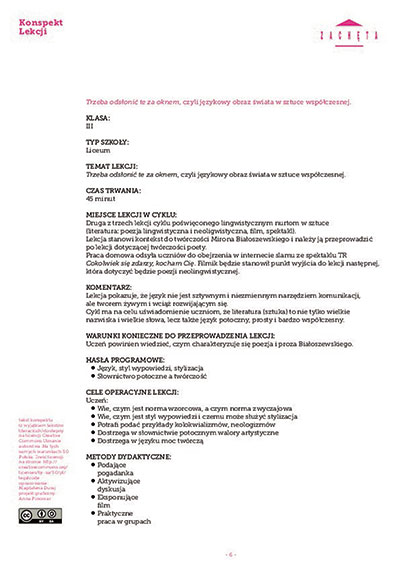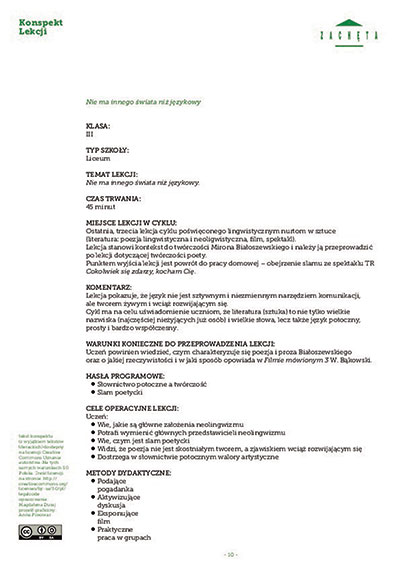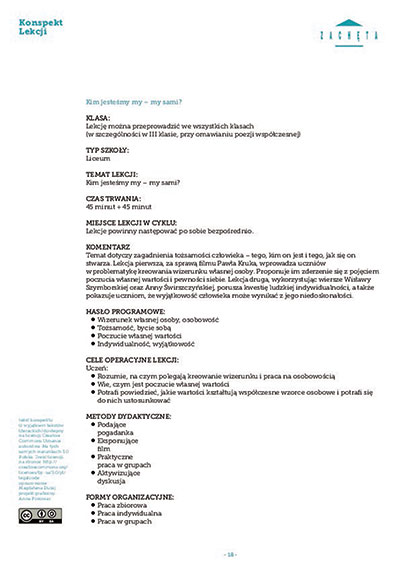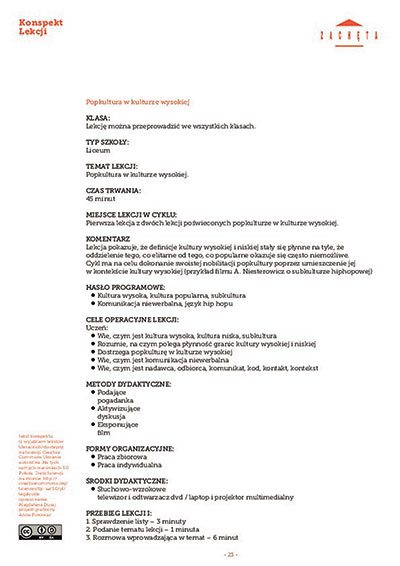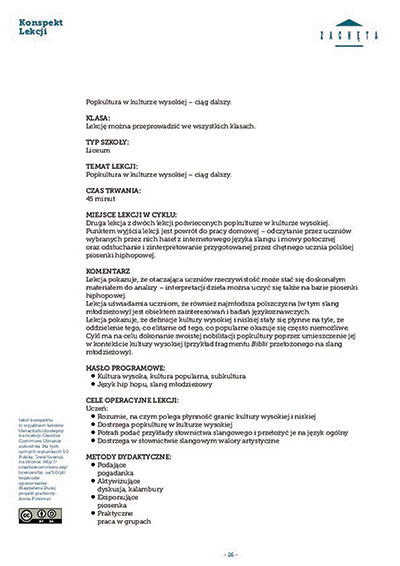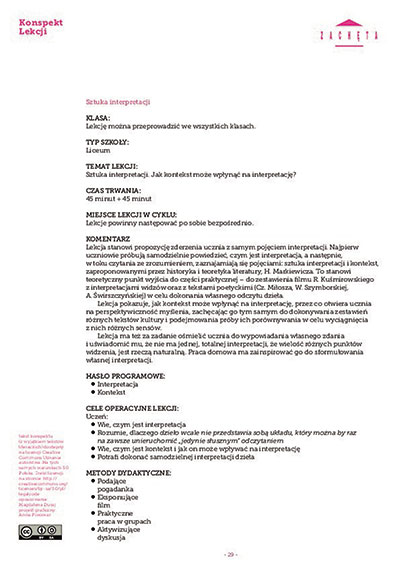Publikacja udostępniana jest na licencji Creative Commons.
Publication date: 15.08.2015
The garden in itself is a multidimensional phenomenon. It can be a specific place, a symbol and metaphor, as well as an artwork. Above all, it is a part of the landscape, an area where the elements of nature meet the work of man. It is man who creates the garden, organising and forming it in his own way and for his own purpose. In this unique space it is easier for him to harmoniously coexist with tamed nature; and according to Epicurus, human life should be harmonised with the life of the garden. The ancient philosopher said that it is precisely the garden that reflects the true appeal, taste and value of life; unconstrained individualism and the authenticity of human existence.
Although in the ancient Greco-Roman world the garden was associated with religious symbolism and practical functions, the Renaissance and the Baroque came to think of it as a kind of ‘third nature’ — neither completely natural nor human. It began to be identified with the improbable world. In Le Jardin exploré, Philippe Nys noted that the structure of garden interiors at the time bore a semblance to the poetic of dreams. The garden adopted the symbolism of paradise, love, shelter for the dead, ideal place; authors such as Ludovico Ariosto, Torquato Tasso, William Shakespeare or Giambattista Marino highlighted in their work its fantastic dimension. In his 1623 poem, L’Adone, Marino tells the story of Adonis travelling with Mercury through five gardens symbolising man’s five senses. Their space represented a sensualistic vision of a universum where nature and culture are inextricably connected. The Baroque idea of cognition, made possible by the engagement of all the senses, was also manifest in the work of Jan Brueghel the Elder. In The Five Senses, a painting series dating from the early 17th century, he showed the allegories of touch, hearing, sight, smell and taste amid or combined with garden scenery. According to Mario Praz, who in his book Il Giardino dei Sensi compared Marino’s literary work to Brueghel’s painting, it was precisely the motif of the garden that expressed the true spirit of Baroque aesthetics.
Many of the above themes, present in the cultural history of gardens, reveal themselves in the Zachęta exhibition. The show has been conceived by Magdalena Godlewska-Siwerska, who has invited eight artists, mostly from the Podlasie region; she has also included two works by the late Iłarion ‘Zenek’ Daniluk. These eight include land artists, painters, sound artists, authors of installations. Each of them has created their own proposition of a garden, treated in both literal and metaphorical, poetical terms, sometimes as a garden of memory. Thus the exhibition features actual nature-associated materials: water, sand, stones, peat, beeswax, grass, wicker, live plants, tree branches, fungi. One can touch them, listen to the characteristic chirping of the cicadas and absorb the aromas of nature, whereas the sense of smell evokes associations complementary with that of taste. These gardens are not surrounded by open space, but by the white walls of the gallery, which has been turned into a fantasy place, where water and peat — symbol and source of life and an exemplification of decomposition and death — blend with each other in an order determined by the self-repeating cycle of nature. Childhood memories coexist here with dream imagery, and everything is bound together by the possibility of sensual experience, of tangible contact with the exhibits. That is why the majority of works are projects created specially for the occasion. They complement each other, comprising an image of strange gardens, while we, like Adonis in Marino’s poem, are invited to stroll around them, engaging all our senses in doing so.
Opening the show is Igor Przybylski’s Garbatka-Letnisko. Changes, Changes, Changes . . . , a work devoted to large village in the Masovian province, once a popular summer resort. Today it appears desolate, an impression enhanced by the sight of ruins and abandoned, dysfunctional buildings. The only immutable element amid these architectural ‘changes’ is the church — the focal point for almost everyone here. Renovated and repaired, it majestically presents its façade against the background of a well-tended garden. A train station, built in 1919, gives only a distant sense of the former greatness of a place that no one remembers as a resort anymore. Przybylski’s work deals, therefore, with what has been lost, introducing us to the world of his childhood memories, seen from the perspective of a teenage boy. Video footage has captured images of specific buildings, making the piece resemble a rather traditional slide show. These buildings are dilapidating, the architecture falling apart and evanescing, and it is only the surrounding verdure, audible, caressed by the wind, that flourishes unabated.
A trip to Garbatka will be organised during the exhibition, its purpose to show what has not yet been lost there. The village has a history dating back several hundred years; it is mentioned already in Jan Długosz’s Liberum beneficiorum. It also lies near Czarnolas, where Jan Kochanowski lived and worked, a poet whose work frequently dealt with issues of man’s relationship with nature and anticipated Baroque concepts. Hearkening back to the Baroque notion of gardens suspended at the boundary between life and death is another work, Paweł Matyszewski’s Gardens of Oblivion (Oddities), arranged with grey stones, with false shamrocks grown by the artist and a water reservoir. This garden has been inscribed in a hexagonal shape, characteristic for Baroque coffin portraits. In this cemetery-like ambience, even water doesn’t offer purification, turning out to be a rather dirty pond that one cannot drink from. The composition changes depending on the light conditions, looking differently in daytime, and differently in the evening, when the water surface reflects against the wall, becoming an animated component of a Baroque graveyard.
In the same space lingers a barely discernible smell exuded by pieces of silky clay installed on the walls; they are part of Anna Panek’s work Bloom, the title referring to the change of colour and growth of various kinds of biological layers on natural objects. Here it is the gallery wall that blooms; objets d’art resembling swirling petals have been glued to it, looking as if moved by a gust of wind that has entered the closed space. The arrangement of these materials brings to mind gentle brush stroke, and the petals, similar to those from David Schnell’s paintings, move beyond the picture frame, ‘painting over’ the gallery architecture. The wall becomes thus an ephemeral image of all kinds of hue changes that contrast with the grey and funebrial Gardens of Oblivion (Oddities) while offering the sensation of being constantly in motion, of whirling, vibrating, floating up and down in the air.
Mirosław Maszlanko’s circular Membranes deal with dynamics too. Suspended under the ceiling, they fill the next room almost completely. While built with objects extracted from the natural environment, they nonetheless suggest the layout of locomotive wheels, producing a sense of closeness between nature and technology. The static work has been composed and constructed so as to create the impression that the discs are constantly moving. Thus manifests itself a conscious dialogue with the history of the avant-garde. Membranes resemble the circular forms painted by the Italian Futurists, who sought to express absolute movement in art. Absolute movement, according to Henri Bergson, is bound up with the ontological aspect of elan vital — a vital impetus, an inner energy shaping the world in eternal motion. Everything seems to be moving; even an inert object remains in a dynamic relationship with its environment. In Maszlanko’s work, this dynamism is enhanced by shadows cast on the gallery’s walls by the wooden discs. Their shape resembles the spirals in Marcel Duchamp’s Rotary Demisphere of 1925, a machine that, when connected to a gramophone, produced optical illusions. Duchamp’s work prefigured the aesthetics of Op Art and future avant-garde experiments using the creative, rather than reproductive, role of the gramophone. In Membranes, therefore, we get to see the shadows of avant-garde investigations cast by nature shaped by the artist.
Krzysztof Topolski’s Lighter is another avant-garde experiment with motion, this time with sound vibrations. It is a wooden bench that makes the user’s body vibrate; a place of relaxation in a garden where the waves of pulsating sounds can not only be heard but also felt through the skin. Sitting on the bench, we have in sight both the dynamic/static Membranes and their shadows as well as the works of Iłarion ‘Zenek’ Daniluk, depicting surreal gardens. They are a safe space of quietness and harmony; even communist high-rise blocks, shown against the background of lush and dreamy vegetation, mountains, lakes, rivers, meadows and woods, create no dissonance with the idyllic peacefulness of a dream garden.
Topolski’s bench brings to mind the sound of a pulsating heart and harmonises with a work by Małgorzata Niedzielko. Her sculpture resembles a huge aorta with two pipes letting out intriguing sounds. The work is displayed in the next room, on the way to which we pass peat-covered walls, to the accompaniment of the chirping of cicadas. Peat itself is also the material of another work by Niedzielko, installed on one of the adjacent walls. From a distance it appears to be a two-dimensional Malevichean black circle, but it is actually a black hole carved at stomach height. This evokes associations with the womb of a pregnant woman, the impression being amplified by a delicate sound of foetal waters that can be heard when we stick our head into the hole. We are born head down; in this case, the viewer performs a reverse procedure, metaphorically returning to where we all come from. One can find oneself again in a dark, confined space, and the peat material has connotations with both decay and death and with the storing and regulation of the outflow of water. It is precisely the water sounds that bring to mind the motif of rebirth and of bearing new life.
Light in the room with Niedzielko’s works has been heavily dimmed. The space also holds Paweł Matyszewski’s dark painting, Phantoms; the hair attached to it resembles black vegetation that covers the canvas, evoking a sense of danger. The painting thus contrasts with an adjacent baby bath that has been filled with sand. This is Marzanna Morozewicz’s My Little Bathtub, in which her parents bathed her when she was a child. A toy rake lying nearby invites us to enter the world of the artist’s early memories, which in turn evokes another garden of memory. The work concludes the part of the show commenced by Igor Przybylski’s childhood memories.
In the separate space of an old, disused staircase, has been displayed the show’s final work, an installation by Iza Tarasewicz. These are reishi mushrooms of various shapes, suspended on metal constructions, exuding an intense, suffocating smell and filling a claustrophobic space that has been transformed into a healing garden. Introduced to a new environment, the mushrooms become aestheticised; they grow, their colours and shapes changing in the unnatural surroundings as the exhibition progresses.
Created under the curatorial supervision of Magdalena Godlewska-Siwerska, the show conjures up a poetic fantasy about life and death, childhood and dying, dynamics and inertia, opening and closing, sound and silence, about natural creations and cultural products. It thus forms a meaningful world of oppositions, representing a cycle of transformations characteristic for the world of nature. Life blends with premonitions of death here, and a sense of harmony and security with dissonances and danger. These are, above all, gardens where we won’t notice a human figure. No human words can be heard here; instead there is a language of nature and art: the sounds of cicadas and water, the vibrating beat of the heart. In reality, man only hides behind the works, inviting us to enter them, to delve into them with all our senses, like Adonis does in Marino’s poem. We have no Mercury as a guide, so we should gear up for individual meditation and a casual walk between the objects, like in a garden labyrinth. The possibility of listening, smelling and touching complements the visual impressions. When we close our eyes and turn to the other senses, the show’s reception still offers auditory and tactile pleasure. It is dark, avant-garde, surreal and baroque, and through the vibrating sound of the beating heart the Epicurean allure, taste and value of life is revealed in it.
Przemysław Strożek
translated by Marcin Wawrzyńczak
-
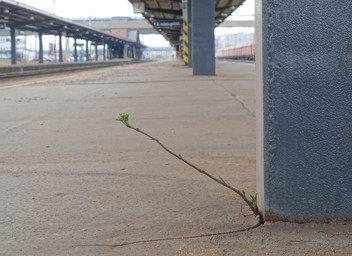 15.08 – 04.10.2015Gardens
15.08 – 04.10.2015GardensThe genesis of the “Gardens” exhibition lies in the educational activities of the Zachęta, which opens art to people whose contact with it may be restricted, either for social reasons or those of, for example, eyesight or hearing. It was born on an impulse, thinking about how art can influence the viewer. This exhibition has been put together for all art lovers willing to abandon traditional ways of seeing. Come inside, close your eyes and open your ears...
Zachęta – National Gallery of ArtZachęta
